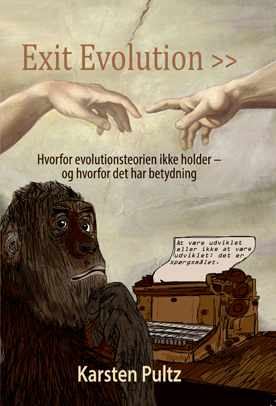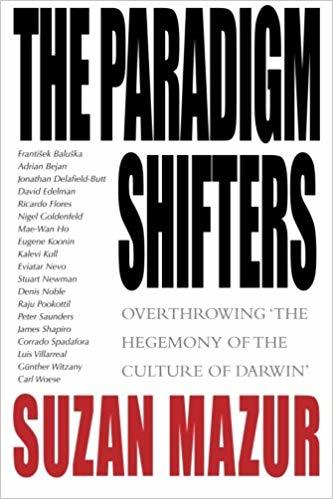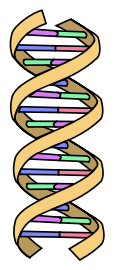Michael J. Behe's Blog, page 543
January 8, 2019
Can a computer simulation show that helium compounds exist on Earth?
 helium power
helium powerThat could impact our understanding of early Earth. Helium is the second most abundant element in the universe but finding it on Earth is tricky. So researchers resorted to a computer simulation and found a promising possible compound:
Helium-bearing compounds have, until very recently, been considered unlikely to exist under the physical conditions on or inside the Earth, Chen says, but in his opinion, his team’s new predictions change that view. Chen suggests that primordial helium reacted with FeO2 back when the Earth was new, forming a solid material. The compound is sufficiently heavy that it would only rise to the surface through so-called mantle plumes, which are columns of hot, solid rock that move up to the crust. When FeO2He nears the surface and experiences a drop in temperature and pressure, it should destabilize and release helium gas. Katherine Wright, “Focus: A Home for Helium inside Earth” at Physics
Other scientists have shown caution, citing the need for laboratory experiments to demonstrate that the compound proposed only in a computer simulation could really exist.
Our physics color commentator Rob Sheldon is also cautious:
Helium is a very anomalous element. It should be building up in the Earth’s atmosphere, but it isn’t there. It should diffuse very rapidly, say, through zircons, yet its abundances are higher than expected. It should be the 2nd most abundant element in the universe, yet seems to be missing from stars and planets (as determined by astronomer’s spectroscopy). Yet helium doesn’t solidify, and not even liquify in the vacuum of space, it is supposed to show up as light travels through the helium gas.
Now we find out that helium can form solid compounds, and that not all of it is in the gaseous state. This should shake up a lot of theories. Which is why physics is an experimental science, and not a computer simulation playground.
Rob Sheldon is the author of Genesis: The Long Ascent
Note: There is a current shortage of helium (always escaping into space) which affects more than balloons: It is used in helium in research on superconductors and in magnetic resonance imaging.
See also: Michael Denton on why the Sun is remarkably fit for life
and
What About The Elusive Dream:Metallic Hydrogen? (kairosfocus)
Follow UD News at Twitter!
Copyright © 2019 Uncommon Descent . This Feed is for personal non-commercial use only. If you are not reading this material in your news aggregator, the site you are looking at is guilty of copyright infringement UNLESS EXPLICIT PERMISSION OTHERWISE HAS BEEN GIVEN. Please contact legal@uncommondescent.com so we can take legal action immediately.
Plugin by Taragana
Artificial intelligence: Machines do not see objects as wholes

Mistaking a teapot shape for a golf ball, due to surface features, is one striking example from a recent open-access paper:
The networks did “a poor job of identifying such items as a butterfly, an airplane and a banana,” according to the researchers. The explanation they propose is that “Humans see the entire object, while the artificial intelligence networks identify fragments of the object.” News, “Researchers: Deep Learning vision is very different from human vision” at Mind Matters
“To see life steadily and see it whole”* doesn’t seem to be popular among machines.
*(Zen via Matthew Arnold)
See also: Can an algorithm be racist?
Copyright © 2019 Uncommon Descent . This Feed is for personal non-commercial use only. If you are not reading this material in your news aggregator, the site you are looking at is guilty of copyright infringement UNLESS EXPLICIT PERMISSION OTHERWISE HAS BEEN GIVEN. Please contact legal@uncommondescent.com so we can take legal action immediately.
Plugin by Taragana
Universal formula for “turning on” monogamy: Common descent or common design?
From ScienceDaily:
According to a new study led by researchers at The University of Texas at Austin that looked at 10 species of vertebrates, evolution used a kind of universal formula for turning non-monogamous species into monogamous species — turning up the activity of some genes and turning down others in the brain.“Our study spans 450 million years of evolution, which is how long ago all these species shared a common ancestor,” said Rebecca Young, research associate in UT Austin’s Department of Integrative Biology and first author of the study published today in the journal Proceedings of the National Academy of Sciences.
The authors define monogamy in animals as forming a pair bond with one mate for at least one mating season, sharing at least some of the work of raising offspring and defending young together from predators and other hazards. Researchers still consider animals monogamous if they occasionally mate with another.
The researchers studied five pairs of closely related species — four mammals, two birds, two frogs and two fish — each with one monogamous and one non-monogamous member. These five pairs represent five times in the evolution of vertebrates that monogamy independently arose, such as when the non-monogamous meadow voles and their close relatives the monogamous prairie voles diverged into two separate species.
The researchers compared gene expression in male brains of all 10 species to determine what changes occurred in each of the evolutionary transitions linked to the closely related animals. Despite the complexity of monogamy as a behavior, they found that the same changes in gene expression occurred each time. The finding suggests a level of order in how complex social behaviors come about through the way that genes are expressed in the brain.
This study covers a broader span of evolutionary time than had been explored previously. Other studies have looked at genetic differences related to evolutionary transitions to new traits, but they typically focus on animals separated by, at most, tens of millions of years of evolution, as opposed to the hundreds of millions of years examined with this study.
“Most people wouldn’t expect that across 450 million years, transitions to such complex behaviors would happen the same way every time,” Young said. Paper. (paywall) – Rebecca L. Young, Michael H. Ferkin, Nina F. Ockendon-Powell, Veronica N. Orr, Steven M. Phelps, Ákos Pogány, Corinne L. Richards-Zawacki, Kyle Summers, Tamás Székely, Brian C. Trainor, Araxi O. Urrutia, Gergely Zachar, Lauren A. O’Connell, Hans A. Hofmann. Conserved transcriptomic profiles underpin monogamy across vertebrates. Proceedings of the National Academy of Sciences, 2019; 201813775 DOI: 10.1073/pnas.1813775116
More.
This figure from the University of Texas at Austin demonstrates that “At least five times during the past 450 million years, evolution used a kind of universal formula for turning animals monogamous — turning up the activity of some genes (red) and turning down others (blue) in the brain”:
[image error]
Notice the odd choice of language: What if, instead of saying “evolution used a kind of universal formula for turning non-monogamous species into monogamous species,” they had said “God used a kind of universal formula for turning non-monogamous species into monogamous species”? Does that formula bother you? Why?
Suppose they had just said, “It appears that there is a standard genetic formula for turning non-monogamous species into monogamous species”? Would that bother you too? Why? Because putting it that way makes you wonder about design but saying “evolution used” precludes the thought? If so, Big Brother smiles on you, you dumb cluck. Better find out what else he’s up to these days.
Seriously, the third way of expressing it would be the least value-laden.
Anyway, a friend writes to say, in response to: “Most people wouldn’t expect that across 450 million years, transitions to such complex behaviors would happen the same way every time”: That’s what you would expect if it’s not common descent but common design.
Incidentally, if humans have that coding, what becomes of claims that monogamy isn’t natural to us? Maybe genetic determinism won’t be as popular then.
See also: STDs + Stone Age = Monogamy!!
and
“Two Simulations Reach Opposing Conclusions About Why Monogamy Evolved In Primates”
Follow UD News at Twitter!
Copyright © 2019 Uncommon Descent . This Feed is for personal non-commercial use only. If you are not reading this material in your news aggregator, the site you are looking at is guilty of copyright infringement UNLESS EXPLICIT PERMISSION OTHERWISE HAS BEEN GIVEN. Please contact legal@uncommondescent.com so we can take legal action immediately.
Plugin by Taragana
Social science hoaxer’s job at risk for revealing “bias”
 What’s hot? What’s not?/Niklas Bildhauer, Wikimedia
What’s hot? What’s not?/Niklas Bildhauer, Wikimedia
Well, really for revealing what kind of rubbish passes for social science today.
Back when Alan Sokal first did Sokal hoaxes on social science (= publish something intended to be meaningless and watch social scientists take it seriously), he wasn’t at much risk. Recently, some social scientists, hoping to spur reform, tried it again and were astoundingly successful. Reform? Are you kidding? In today’s world of the angry aggrieved and woke, they’re the ones who are feeling the pain:
A professor who fooled prestigious journals into running absurd hoax papers, as a test of their bias, says he may now lose his job because of his actions.
Peter Boghossian was one of three people who collaborated last year to test the standards of various university disciplines, submitting papers loaded with left-wing buzzwords to journals in fields like feminism, race studies, queer studies, and cultural studies.
Many prestigious journals fell for their absurd hoax papers. A leading feminist journal published a section of Adolf Hitler’s Mein Kampf that had simply been re-written with fashionable buzzwords. Another journal published a paper about “rape culture and queer performativity” in dog parks…
The three hoaxers all say that they are liberals, but they feared some university disciplines had gone off the deep end and now value politics over truth. Maxim Lott, “Portland professor behind journal paper hoax fears he could lose his job” at FOX News
Being “liberals” is part of the problem. Liberalism doesn’t survive the world of 2+2=5. Liberals might come up with Incorrect findings. And it might matter to them that the Correct stuff is just junk.
Boghossian’s breach of ethics was that he was supposed to get the consent of the journal editors before hoaxing them because they are human subjects. No, really. That is the explanation.
From Aaron Mesh at the Willamette Week:
A public relations team working with Boghossian has already released statements of support from academic “free thinkers” including Richard Dawkins, Steven Pinker and Jordan Peterson.
“If the members of your committee of inquiry object to the very idea of satire as a form of creative expression they should come out honestly and say so,” Dawkins writes. “But to pretend that this is a matter of publishing false data is so obviously ridiculous that one cannot help suspecting an ulterior motive.”
Boghossian’s papers—which claimed to study the rate at which Portlanders interrupted canine sex at dog parks, among other unlikely findings—were designed to mock gender studies, race studies and feminist theory by showing that the top journals in those fields had low standards for publication. The admission of the hoax sparked heated debate over whether Boghossian and his colleagues had demonstrated the absurdity of those disciplines or the ease of getting bad-faith research published. More.
The authorities here are as laughable as the journal editors. What’s the harrumph! about “the ease of getting bad-faith research published” supposed to mean? If you left the office cat in charge, you’d doubtless get the same result but whose fault is that?
If science of any kind survives, the question will be not “Why are the journals allowed to be so debased?” but “Why is this field publicly funded?” Oh and, “Why do degrees in the subject matter?”
More on the Sokal hoax
See also: Sokal hoaxes strike social science again
Exposing gender studies as a Sokal hoax
Social Science Hoax Papers Is One Of RealClearScience’s Top Junk Science Stories Of 2018
and
Alan Sokal, Buy Yourself A Latte: “Star Wars” Biology Paper Accepted
Follow UD News at Twitter!
Copyright © 2019 Uncommon Descent . This Feed is for personal non-commercial use only. If you are not reading this material in your news aggregator, the site you are looking at is guilty of copyright infringement UNLESS EXPLICIT PERMISSION OTHERWISE HAS BEEN GIVEN. Please contact legal@uncommondescent.com so we can take legal action immediately.
Plugin by Taragana
Evolutionary biologist tries to gather shards of truth
When the battle for the idea was lost a generation ago. Our physics color commentator Rob Sheldon reflects on evolutionary biologist Colin Wright’s hand-wringing at Quillette over what social justice warriors are doing to his field and points out a sad but instructive fact about Wright’s lament:
He thinks that the slogan “gender is a social construct” denies Darwin. Here are the conclusions:
Back when evolution was under attack from proponents of Biblical Creation and Intelligent Design, academic scientists were under no pressure to hold back criticism. This is because these anti-evolution movements were almost exclusively a product of right-wing evangelicals who held no power in academia. Now we have a much bigger problem, because evolution denialism is back, but this time it’s coming from left-wing activists who do hold power in academia. This makes the issue both harder to ignore and harder to remove. Social justice and hyper-militant trans activism now seems to act as a kind of anti-universal acid, and not merely a strong buffer solution. While the universal acid of evolution eats through old cherished beliefs and replaces them with deeper understanding and a clearer picture of reality, the anti-universal acid of social justice ideology is a recklessly destructive force, aiming to abolish scientific truth and replace it with relativistic postmodern nonsense…
But it seems clear to me that academia now is not as it was advertised a decade ago when I started down this path. It is no longer a refuge for outspoken, free-thinking intellectuals. Instead, it seems one must now choose between living a zipper-lipped life as an academic scientist, or living a life as a fulfilled intellectual. Currently, one cannot do both.
So evidently, shutting down Christians was “outspoken, free-thinking” but shutting down evolutionary biologists is “a zipper-lipped life.” It seems that Darwinism is a good “universal acid,” but the post-modern products of Darwinism are “a kind of anti-universal acid” (whatever that might be, he doesn’t seem to know his pH scale). Despite the pain they feel, Darwinists don’t seem to realize it is their own hands that have torn down the edifice of knowledge. They still think that discrimination is valid when they are in charge, that courtesy is only for friends, that objectivity is their personal possession.Rob Sheldon, “Academic Freedom — Sweeping Up the Shards” at Evolution News and Science Today:
Yes, they did think that. The Darwinians thought they could shield Darwin from all criticism while using him to promote naturalism (nature is all there is), often called “materialism.” And destroying the careers of people who knew reasons and evidence against it. And now the social justice warriors—the enraged Woke—are claiming the same privileges. Immunity for themselves from any scrutiny as to their motives or their truth claims.
Some of us would call attention to the fact that, so far, the Darwinian evolutionary biologists still do not grasp what they are up against. The ID folk think truth matters. That makes them easy prey. Social justice warriors know that, for them, only power matters. They are a better match for the Darwinians they are attacking and we will see what happens next.
See also: Talk about a perfect storm: Social science needs evolutionary theory
The perfect storm: Darwinists meet the progressive “evolution deniers” — and cringe… Double down cringe…
The Darwinians’ cowardice before SJW mobs explained in detail: They thought the mob was coming for someone else.
Rob Sheldon: Have a little pity for scientists scared of SJWs I thought the Areo article was the most honest I have met in a long while. It is one thing to boast about courage in the faculty lounge, it is quite another in the provost’s office. I have been cursed with both experiences.
Follow UD News at Twitter!
Copyright © 2019 Uncommon Descent . This Feed is for personal non-commercial use only. If you are not reading this material in your news aggregator, the site you are looking at is guilty of copyright infringement UNLESS EXPLICIT PERMISSION OTHERWISE HAS BEEN GIVEN. Please contact legal@uncommondescent.com so we can take legal action immediately.
Plugin by Taragana
But if humans are meat machines, how do ethics come into the picture?
 George D. Montañez, (shown chatting with Mike Behe in July, left) a machine learning specialist, reflects on Micah 6:8 as a guide to developing ethics for the rapidly growing profession:
George D. Montañez, (shown chatting with Mike Behe in July, left) a machine learning specialist, reflects on Micah 6:8 as a guide to developing ethics for the rapidly growing profession:
The AI and ML systems we have in place today are not sentient, but they are still dangerous. I am not worried about the future of AI, but I am concerned about the dangers artificial learning systems currently pose. There are obvious threats: weaponization, terrorism, fraud. But there are also less intentional threats, such as increased inequality, privacy violations, and negligence resulting in harm. For example, consider the case of the self-driving Uber vehicle that killed an Arizona pedestrian in March. According to some, that fatal crash proved that self-driving technology just isn’t ready yet, and releasing these cars on roads in their current form is an act of extreme negligence.
Cathy O’Neil, in her book, Weapons of Math Destruction highlights several cases of machine learning systems harming poor and minority groups through the uncritical use of questionable correlations in data. For example, models that attempt to predict the likelihood that someone will commit a crime if released from prison (criminal recidivism models), use early run-ins with police as a feature. Because poor minority neighborhoods are more heavily policed and minority youth are prosecuted more often than their rich white counterparts for the same crimes, such as recreational drug use and possession, this feature of prediction strongly correlates with race and poverty levels, punishing those with the wrong economic background or skin color. Another feature of these systems assesses whether a person lives near others who themselves have had trouble with the police. While this feature may in fact correlate with a higher risk of committing a crime in the future, it punishes the person for what others have done, which they have no control over. Given that poorer people cannot just move into wealthier neighbourhoods to improve their statistics, the poor are doubly punished, simply for being poor. Other examples are not hard to find. Because of these dangers, ethics has become an area of increasing concern for AI researchers. George G. Montañez, “Think About Ethics efore Trouble Arises” at Mind Matters
True, but—as Montañez makes clear—we only care about ethics if we aren’t machines. His piece highlights the way data can embody hidden ethical problems.
George D. Montañez is an assistant professor of computer science at Harvey Mudd College, in Claremont, California, specializing in machine learning.
Also by George Montañez: What is learning anyway?
and
Copyright © 2019 Uncommon Descent . This Feed is for personal non-commercial use only. If you are not reading this material in your news aggregator, the site you are looking at is guilty of copyright infringement UNLESS EXPLICIT PERMISSION OTHERWISE HAS BEEN GIVEN. Please contact legal@uncommondescent.com so we can take legal action immediately.
Plugin by Taragana
January 7, 2019
Denmark: Perhaps not so rotten after all
 Karsten Pultz
Karsten PultzSays Karsten Pultz, author of Exit Evolution:
Recently, I wrote a piece for UD describing how a Danish Christian newspaper, Kristeligt Dagblad, is obviously biased in favour of evolution whenever it covers the creation vs. Evolution issue. In the article “Something Is Rotten In The State Of Denmark” I aired my frustration over the fact that I, as an ID proponent, was deprived the opportunity to respond to allegations about me promoting creationism, featured in the newspaper.
I had submitted an article to the newspaper where I thoroughly explained how ID differs from creationism, and how the labelling of ID as creationism done by evolutionists, is a strategic distraction executed in order to avoid addressing the huge amount ofproblems in their theory which the ID-community points to. The newspaper did not bring my piece during the period where the evolution debate was actually running, and I got rather annoyed as I realized that the current debate had come to an end, momentum was lost, and time had been surpassed. I emailed the responsible journalist three times to get an answer about whether they were going to publish my piece or not, but got no response.
Having been ignored for more than three weeks in Denmark, I was given the opportunity to write here on UD about my problems and about the story that initiated the debate over evolution, a debate that went on for several weeks in the newspaper. I did not expect UD to solve my problem of getting the voice of ID heard, but I was pleased to let off steam in a public forum.
Because I was furious at being ignored I found a slightly perverse satisfaction in emailing the journalist and the chief editor providing both with a link to my article on UD. I did not care if it resulted in me never ever getting anything published in this newspaper, because it wouldn’t make any difference, ID has been and would probably still be tried ignored to death anyway by this ultra liberal Christian Newspaper. And besides, I work for another, although much smaller conservative Christian newspaper, where I can write about ID as much as I like.
But then the miracle happened, – or maybe it wasn’t a miracle. Two days after the link to my article on UD was sent to the journalist and his boss, I received an email from the journalist where he assured me that they were going to publish my piece around New Year — and they did. On the 1st of January my piece about ID was in the paper. Of course it could be that they intended to publish my piece all along and that the journalist just did not respond to my emails. However I like to think—and find it more probable than not—that my piece on UD persuaded the newspaper. Why else would they, after 3 weeks of silence and after the debate was over, suddenly decide to publish my piece?

I see this as a small but important victory for ID in Denmark. Our main problem is ignorance and getting information out about ID is therefore essential if we are going to see any progress. Very few people have heard about ID, and those who have, unfortunately often rely on hearsay or the standard Wikipedia misrepresentation. I would not be able to fight the ID cause without help from abroad like UD and all the wonderful people in the ID community, primarily from USA and Germany. Denmark has the second highest rating when it comes to accepting evolution (ca. 85%), and is also among the most atheistic countries in Europe. so it’s a tough job promoting ID here, and would be an impossible task if it wasn’t for the great support I receive from my ID friends abroad.
 News at Linked In
News at Linked InNote to Karsten from us here at UD: Some Danes should get out of the house more. Everything’s up in the air now. The genome map did for classical Darwinian evolution what neuroscience did for phrenology.
See also: Something Is Rotten In The State Of Denmark
Copyright © 2019 Uncommon Descent . This Feed is for personal non-commercial use only. If you are not reading this material in your news aggregator, the site you are looking at is guilty of copyright infringement UNLESS EXPLICIT PERMISSION OTHERWISE HAS BEEN GIVEN. Please contact legal@uncommondescent.com so we can take legal action immediately.
Plugin by Taragana
Are synthetic chemicals altering the fabric of our bodies?
It’s certainly worth reflecting on:
It’s fair to say that PCBs and fluorocarbons have altered the biochemical composition of the food web and the interior of the human body, and in the case of the PFASs, the water we drink. (Some PFASs can even fall with rain.) These have been swift, sweeping changes over the course of just three or four generations, too quick for the slow-grinding machinery of human evolution to adapt. And yet, PCBs and PFASs are now an integral part of the human story. They pass from species to species, from mother to child. They are present from conception to death, and consumed with daily meals and holy feasts. The presence of PCBs alone shapes how humankind reproduces itself, how our young develop, and even whether subsequent generations will be susceptible to certain cancers or resilient against disease. Pam Weintraub, “Time-bombing the future” at Aeon
If that’s so, then researchers who are advancing claims about recent evolution will need to consider these possible effects.
See also: Can Cities Serve As Cauldrons Of Evolution (Speciation)?
and
Smithsonian: We Really Don’t Know Why Humans Don’t Have Fur
Follow UD News at Twitter!
Copyright © 2019 Uncommon Descent . This Feed is for personal non-commercial use only. If you are not reading this material in your news aggregator, the site you are looking at is guilty of copyright infringement UNLESS EXPLICIT PERMISSION OTHERWISE HAS BEEN GIVEN. Please contact legal@uncommondescent.com so we can take legal action immediately.
Plugin by Taragana
Nautilus changes article to credit Suzan Mazur for interview re neo-Darwinism challenges
The interview is with Denis Noble. Recently, we passed along some info about an item, It’s the End of the Gene As We Know It” at Nautilus. Readers here might recall Is the age of the gene finally over? Someone has drawn to our attention that the author, Ken Richardson, had quoted rather generously from Suzan Mazur’s interview with Denis Noble but the version we referred readers to did not reflect that.
For example,
“It is such discoveries that are turning our ideas of genetic causation inside out. We have traditionally thought of cell contents as servants to the DNA instructions. But, as the British biologist Denis Noble insists, “The modern synthesis has got causality in biology wrong … DNA on its own does absolutely nothing until activated by the rest of the system … DNA is not a cause in an active sense. I think it is better described as a passive data base which is used by the organism to enable it to make the proteins that it requires.”
Compare with
KEN RICHARDSON, “It’s the End of the Gene As We Know It” at NautilusMAZUR INTERVIEW WITH DENIS NOBLE. (1st in HuffPost, then in The Origins of Life Circus, and again in The Paradigm Shifters):
“The second reason is a much more conceptual issue. I think that as a gene-centric view of evolution, the modern synthesis has got causality in biology wrong. Genes, after all, if they’re defined as DNA sequences, are purely passive. DNA on its own does absolutely nothing until activated by the rest of the system through transcription factors, markers of one kind or another, interactions with the proteins. So on its own, DNA is not a cause in an active sense. I think it is better described as a passive data base which is used by the organism to enable it to make the proteins that it requires.”

Funny sort of accident, don’t you think? Well, it turns out it wasn’t an accident and Nautilus has updated the page to say this:
It is such discoveries that are turning our ideas of genetic causation inside out. We have traditionally thought of cell contents as servants to the DNA instructions. But, as the British biologist Denis Noble insists in an interview with the writer Suzan Mazur, Note 1:As originally published, the attribution for this quotation was absent.
Well, good! We can’t have people like Mazur “disappearing.” If she hadn’t got the story about how basic concepts in evolution are slowly moving away from Darwin 101 as we learn it in school, who would have?
Her books of interviews, The Origin of Life Circus and The Paradigm Shifters: Overthrowing ‘the Hegemony of the Culture of Darwin’ are an excellent introduction to the new thinkers and new concepts.
But what all this mainly shows is that a non-Darwinian approach to evolution is a going concern now. People want to own assets, not liabilities..
Ahem.
Note: Dr. Richardson “was formerly Senior Lecturer in Human Development at the Open University (U.K.). He is the author of Genes, Brains and Human Potential: The Science and Ideology of Intelligence.” (bio at Nautilus)
See also: Is the age of the gene finally over? (Grab autographs, mementoes!) Does anybody here remember the 99% chimpanzee? So what? Maybe even HE isn’t 99% chimpanzee… not the way they thought, anyhow… Oh, and anyone recall the gene for how you vote? Stay tuned.
Follow UD News at Twitter!
Copyright © 2019 Uncommon Descent . This Feed is for personal non-commercial use only. If you are not reading this material in your news aggregator, the site you are looking at is guilty of copyright infringement UNLESS EXPLICIT PERMISSION OTHERWISE HAS BEEN GIVEN. Please contact legal@uncommondescent.com so we can take legal action immediately.
Plugin by Taragana
Researcher: Virus sequences in human genome implicated in ALS

Amyotrophic lateral sclerosis created a lifelong challenge for Stephen Hawking. The idea that endogenous retrovirus sequences can hang around in our genome and cause such diseases is receiving a cautious hearing:
Like many other animal species, humans carry viral remnants in their genomes, left behind from the integration of retrovirus sequences into the germline DNA of our ancestors over the course of millions of years. Today, these human endogenous retroviruses (HERVs) exist as 450,000 fragments of biological code, representing 39 major viral groups, broken up and scattered throughout the genome. Nath asked his colleague Jeffrey Rothstein, now the director of Johns Hopkins’s Robert Packard Center for ALS Research, for some samples of postmortem brain tissue of ALS patients, and began to search them for RNA transcripts of HERV sequences. The work yielded one match: HERV-K, the youngest group of viral insertions in humans. The transcripts were specifically associated with ALS, Nath and his colleagues found; they were not present in the brains of healthy individuals who died in accidents or in the brains of Parkinson’s patients.1 Since then, Nath, who now heads the Section of Infections of the Nervous System at the National Institutes of Health in Bethesda, Maryland, and others have been steadily accumulating evidence that these viral sequences are expressed in a subset—about 30 percent—of ALS patients.Katarina Zimmer, “” at The Scientist
File this one with: The genome ain’t what it useter be..
See also: Is the age of the gene finally over? (Grab autographs, mementoes!) Does anybody here remember the 99% chimpanzee? So what? Maybe even HE isn’t 99% chimpanzee… not the way they thought, anyhow… Oh, and anyone recall the gene for how you vote? Stay tuned.
Follow UD News at Twitter!
Copyright © 2019 Uncommon Descent . This Feed is for personal non-commercial use only. If you are not reading this material in your news aggregator, the site you are looking at is guilty of copyright infringement UNLESS EXPLICIT PERMISSION OTHERWISE HAS BEEN GIVEN. Please contact legal@uncommondescent.com so we can take legal action immediately.
Plugin by Taragana
Michael J. Behe's Blog
- Michael J. Behe's profile
- 219 followers



